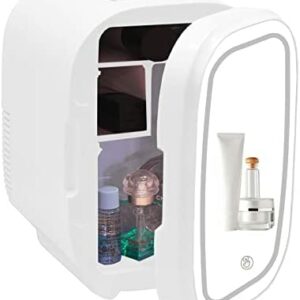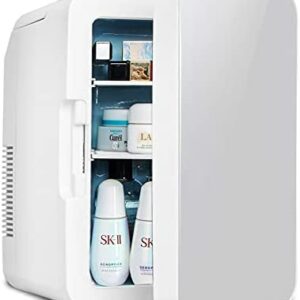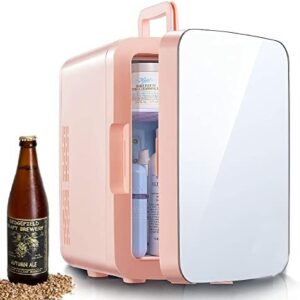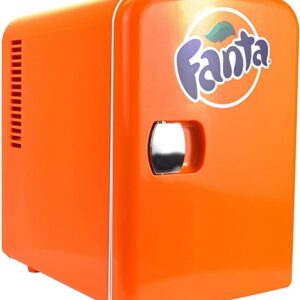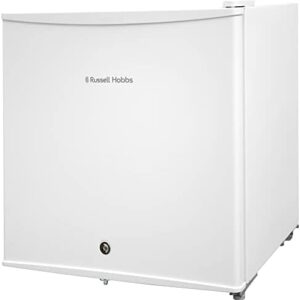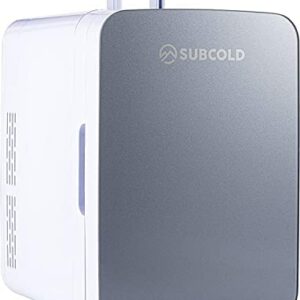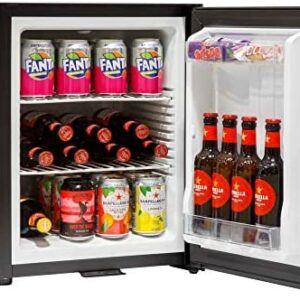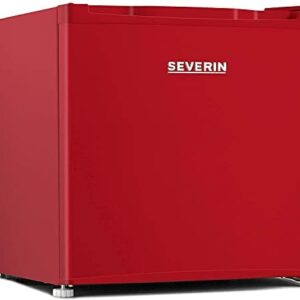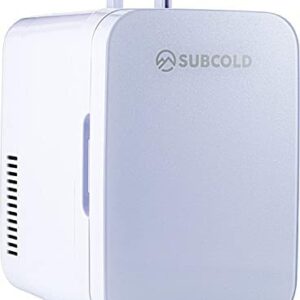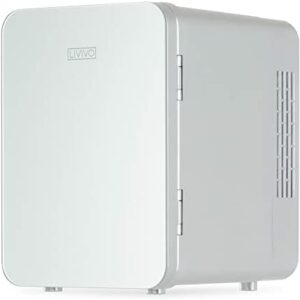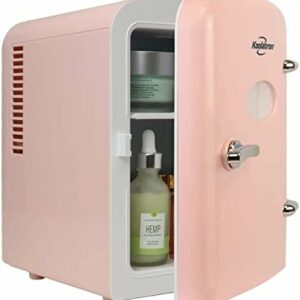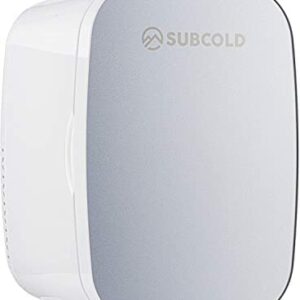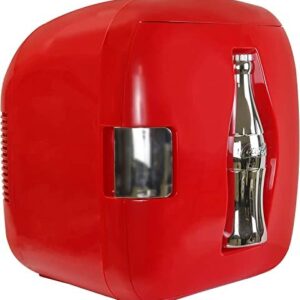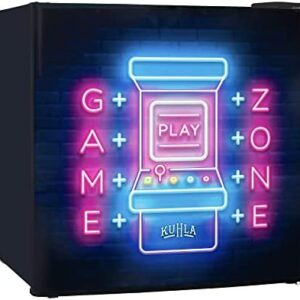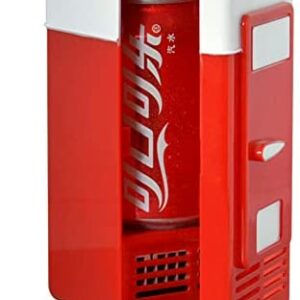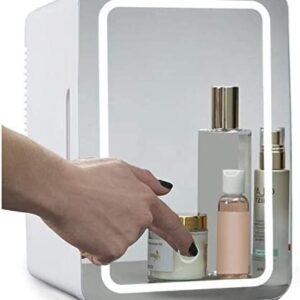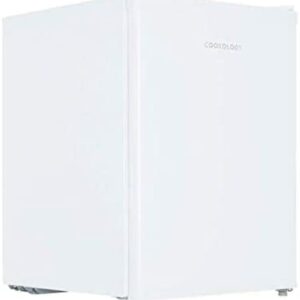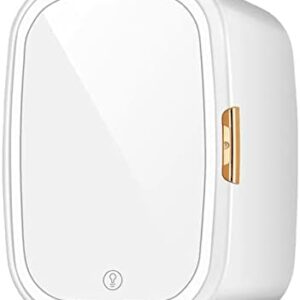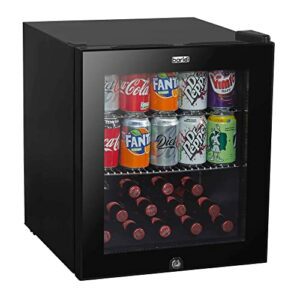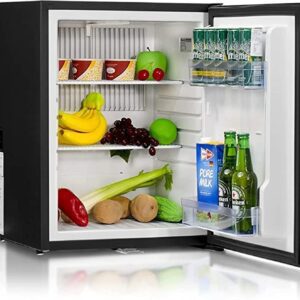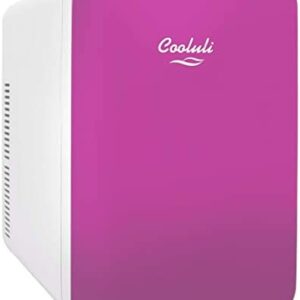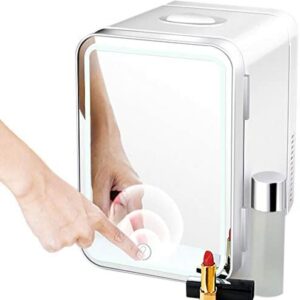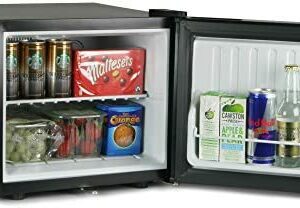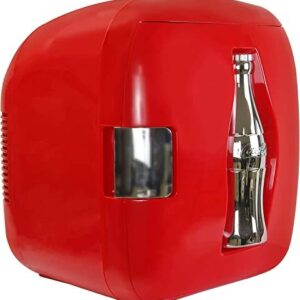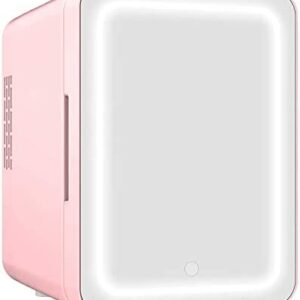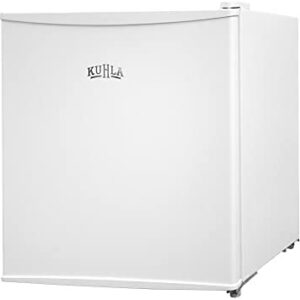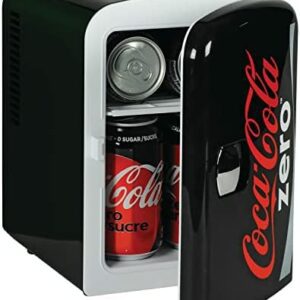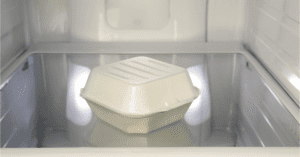Small Office Fridges
Small office fridges, also known as mini fridges, are perfect for keeping drinks and lunches chilled in your workspace. They come in a variety of sizes and features to suit your needs.

Choosing the Right Size Fridge
Small office fridges come in a variety of sizes, ranging from compact 4-litre personal units to spacious 50-litre models suitable for shared use. Here’s how to determine the ideal size for your office:
- Office Size: For smaller offices with limited space, a 4-litre to 10-litre fridge might suffice. Larger offices with more employees can opt for 20-litre to 50-litre models.
- Number of Employees: Consider how many people will be using the fridge. A single-person office might only need a small personal unit, while a 10-person office would benefit from a larger capacity fridge.
- Typical Food Storage Needs: Do employees bring packed lunches or just store drinks and snacks? If lunches are involved, factor in the amount of space needed for containers.
Top Tip: Measure the available space in your office before starting your fridge hunt.
Essential Features for a Smooth Office Fridge Experience
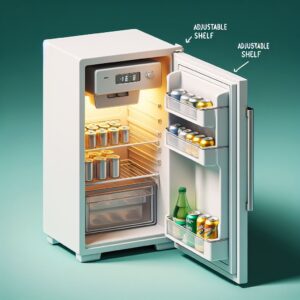
Small office fridges offer a variety of features that can enhance functionality and user experience. Here are some key considerations:
- Adjustable Shelves: Organise your fridge efficiently with adjustable shelves that can accommodate different container sizes.
- Can Dispensers: For offices with frequent soda or beverage consumption, a can dispenser can be a time-saving and convenient feature.
- Freezer Compartment: If employees need to store frozen items like ice packs or quick lunches, a fridge with a small freezer compartment can be beneficial.
- Noise Level: Small office environments can be prone to noise. Look for a fridge with a decibel rating below 40 dB for quiet operation that won’t disrupt productivity.
Remember: Features come at a cost. Prioritise the features that are most important for your office needs.
Editor's Picks: Best Small Office Fridges
We've selected these fridges for their size, features, and value. Find the perfect one for your needs!
Displayed by Best Ratings. See how we rate fridges: link here
Showing 1–30 of 157 results
-
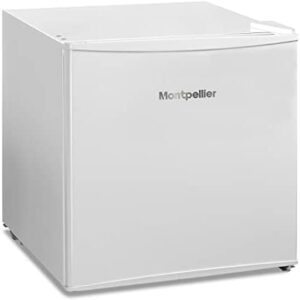
Montpellier MTTR43W Table Top Mini Fridge in White 43L Capacity...
-

6 Litre Mini Fridge – Subcold Pro6 – Chequer White
-

VNIMTI Mini Skincare Fridge 8L
-

Eklipt 10L Mini Fridge
-

Mini Fridge for Bedrooms 10L/11 Cans with Mirror, Cooler &...
-

Coca-Cola Fanta 4L Mini Fridge
-

Russell Hobbs RHTTLF1-LCK Lockable 43 Litre Table Top Mini Fridge...
-

Subcold Ultra 10 Mini Fridge – 10L – Grey
-

Severin KB 8876 Mini Fridge Freestanding 46 L Red
-

Subcold Ultra 6 Mini Fridge – 6L
-

LIVIVO 4L Mini Fridge Cooler with Glass Panel Door
-

Koolatron 4L Retro Mini Fridge – 6 Can Capacity (Pink)
-

Subcold Pro6 Luxury Mini Fridge Cooler | 6L – Grey
-

Coca Cola Heritage Coke Mini Fridge – 7.9L – Red...
-

Kuhla 45L Mini Fridge with Ice Box – Black KTTF4BGB-1019-E
-

Cuifati USB Mini Fridge – Red
-

Mini Fridge Beauty Fridge – Glass Panel + LED Lighting...
-

Cookology MFR67WH 67 Litre White Tabletop Mini Fridge &...
-

LWBLJX 20 L Bedrooms Mini Fridge with LED Makeup Mirror
-

SMETA Camping Fridge 2 Way Mini Fridge 12V/240V 53L with Lock
-

Cooluli 15L Mini Fridge for Bedroom – Pink
-

Beauty Mini Fridge 8L Portable Warmer AC/DC Cooler with Mirror...
-

Drinkstuff 17ltr ChillQuiet Mini Fridge – Black
-

Coca Cola CCU09 Coke Mini Fridge – 7.9L
-

VNIMTI Mini Skin Care Fridge with Led Mirror and Warmer, Light...
-

Kuhla 43 Litre Mini Fridge with Ice Box: Ideal for Home and Office
-

Koolatron Coke Zero 4L 6 Can Portable Cooler/Warmer – Compact...
-

Coca-Cola 4L Mini Fridge – Portable Cooler and Warmer for...
Energy-Efficient Options
Small office fridges are a convenient addition, but they can also add to your electricity bill. Here at Wine Fridge Hub, we understand the importance of eco-friendly choices. That’s why this section focuses on selecting energy-efficient small office fridges to keep your running costs low and minimise your environmental impact.
Understanding Energy Efficiency Ratings
Look for the Energy Label when choosing a small office fridge. This label, displayed prominently on most appliances in the UK, provides valuable information about energy consumption. Here’s a breakdown of the rating system:
- A+++ (most efficient): These fridges use the least amount of energy, resulting in lower running costs and a reduced environmental footprint.
- A++, A+, A: These fridges are also considered highly energy-efficient.
- B, C, D: These ratings indicate less energy efficiency, which can translate to higher electricity bills.
- E, F, G (least efficient): While these fridges might be cheaper upfront, their higher energy consumption can cost you more in the long run.
Remember: A slightly higher initial investment in an A-rated fridge can lead to significant savings on your electricity bill over the lifespan of the appliance. Consider referencing resources like Energy Star https://www.energystar.gov/ to understand efficiency ratings in more detail.
Choosing Energy-Efficient Features
Beyond the overall energy rating, some features can further enhance the energy efficiency of your small office fridge:
- Auto Shut-Off: Look for a fridge with an auto shut-off feature that automatically turns off the cooling system when the door is left open. This simple feature can prevent wasted energy.
- LED Lighting: Traditional incandescent bulbs in fridges are energy guzzlers. Opt for a fridge with energy-efficient LED lighting that provides clear visibility without consuming excessive power.
- Manual Defrosting: Frost-free fridges offer convenience, but they use additional energy to maintain a frost-free environment. Consider a manual defrost model if you’re willing to defrost the fridge occasionally in exchange for improved energy efficiency.
Top Tip: Look for Energy Saving Trust recommendations when choosing a small office fridge. These recommendations highlight particularly energy-efficient models.
Safe Food Storage Practices
A small office fridge can be a breeding ground for bacteria if not handled properly. Here at Wine Fridge Hub, we prioritise the health and well-being of your employees. This section provides essential tips on safe food storage practices to keep your office fridge hygienic and minimise the risk of foodbourne illness.
Maintaining the Optimal Temperature
The most crucial factor for safe food storage is maintaining the correct temperature. Most small office fridges operate best between 4°C (39°F) and 5°C (41°F). This temperature range inhibits the growth of harmful bacteria that can cause foodbourne illnesses.
- Invest in a Fridge Thermometer: A dedicated fridge thermometer allows you to monitor the internal temperature and ensure it stays within the safe zone.
- Don’t Overload the Fridge: Overcrowding can prevent proper air circulation and raise the internal temperature, creating a breeding ground for bacteria.
Proper Food Handling and Storage
- Transfer Leftovers to Sealed Containers: Don’t store leftover food in its original packaging. Transfer it to airtight containers to prevent cross-contamination and odours.
- Label Containers with Dates: Label all containers with the date the food was stored. This helps ensure older items are consumed first and reduces the risk of spoilage.
- Practice FIFO (First-In, First-Out): Place new items behind older ones to ensure older food gets used first.
- Separate Raw Meat and Cooked Food: Always store raw meat, poultry, and fish on the bottom shelf to prevent their juices from dripping onto other food items.
- Clean Up Spills Promptly: Spills can attract bacteria and create odours. Clean them up immediately with a disinfectant wipe.
Regular Cleaning and Maintenance
- Develop a Cleaning Schedule: Clean your fridge regularly, paying attention to shelves, drawers, and the door seal.
- Use a Mild Cleaning Solution: Avoid harsh chemicals. A mixture of warm water and white vinegar is an effective and safe cleaning solution.
- Don’t Forget the Door Seal: The door seal plays a vital role in maintaining the correct temperature. Clean it regularly and replace it if damaged.
By following these safe food storage practices, you can ensure your office fridge remains hygienic and keeps everyone’s food fresh and safe to consume.

